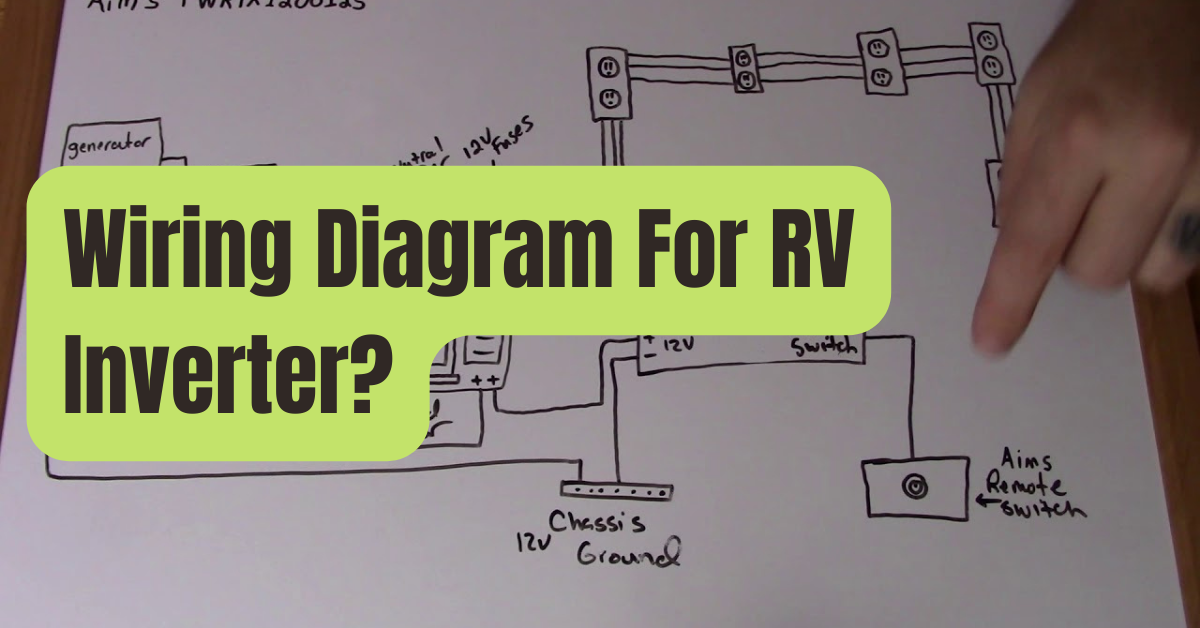Make sure your inverter does not wind up powering your converter-charger when picking your wiring configuration.
The use of a professional installer is strongly urged!
It’s time to connect your brand-new inverter for your RV now that you have one! Here is a helpful explanation for attaching your inverter to your RV’s electrical system, along with some schematics you may look at:
The detailed wiring process for an RV will now be covered.
Switcher Wiring
A device called an inverter transforms Direct Current (DC) into Alternating Current (AC).
Let’s talk about a simple scenario where a battery bank is linked to an inverter.

For further information, feel free to download the PDF version.
Three batteries are shown linked in parallel in the figure above, powering the DC terminals of the inverter.
On the positive (red) wire is a fuse box.
The length of time we can draw power from the batteries is extended if we add more high capacity batteries to the battery bank.
The electricity is then converted by the inverter into AC and gathered from its AC output socket.
RV 2-Way Changeover Wiring (Inverter or AC Shore Line Supply)
A switching circuit known as a “2-Way Changeover” switches the output power between two inputs, in this example, the inverter and the AC shore power line.
A manual changeover switch is shown in the figure below as a 2-way switch.
It is extremely reasonably priced and available on the market.
Through a circuit breaker, the AC shoreline provides the electricity.
The AC shore power line is connected to one of the input terminals of the 2-way changeover switch, and the live and neutral wires of the inverter are connected to the other input terminal.
The output terminals of the 2-way changeover switch are linked to the AC load of the RV.
The 2-way changeover switch’s body or the ground terminal are where the ground wire is attached.

You may get the PDF version here.
3-Way Switchover (Inverter, AC Shore Line, AC Generator to RV)
By connecting the power from the AC shoreline to input 1, the AC generator to input 2, and the inverter to input 3, we were able to alter the output between the three inputs.
By flicking the switch, we may pair the output with any of these inputs.
The RV AC load is further connected to the output terminal.
Through its separate circuit breakers, the AC shoreline and AC generator are both providing electricity.
A particular company’s manual 3-way changeover switch, whose model number is shown on the schematic, is depicted below.
Any changeover switch may be used and wired using the same wires.


Here is a wiring diagram in PDF format, and here is a schematic diagram.
Battery Charging using AC Shore Line or AC Generator
The battery bank of an RV is used to power the gadgets within.
The schematic and wiring schematics for charging these batteries are shown below.
In this case, a 2-way changeover switch may be used.
Either the AC shoreline or the AC generator can provide us with electricity.
The AC generator is linked to input 2, and AC shoreline is connected to input 1 of the changeover switch.
The converter is further linked to the changeover switch’s output.
A converter transforms electricity from AC (alternating current) to DC (direct current) (DC).
Direct Current (DC) source must be connected to the batteries in order to charge them.
A converter therefore fulfills this need.
For safety purposes, a fuse is mounted on the positive (red) line.


This schematic is also available in PDF form here, along with a wiring diagram.
Solar And Ac Shore Line Power Are Used To Charge The Batteries.
The solar system may be used to recharge the batteries.
The wiring and schematic diagrams are shown below.
The solar charge controller is wired to the output of the solar plate.
We have the choice to connect the RV DC load to the solar charge controller.
The battery bank is further linked to the solar charge controller through a fuse box.
The positive (red) wire is where the fuse box is attached.
There are three ways to charge the battery bank shown in these figures.
These include solar system and AC shoreline or generator.


This schematic is for the wiring diagram and is available here in PDF format (also in PDF).










